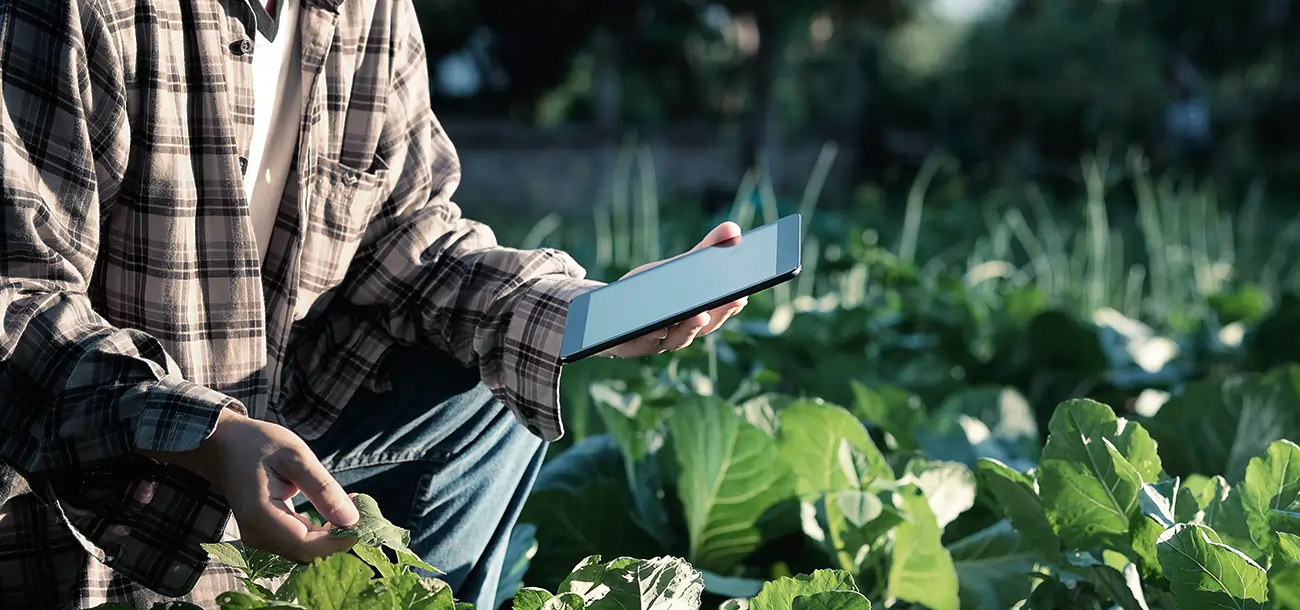
- Home > Blog > Small Business Trends > How New Farming Technology is Changing Today’s Business
How New Farming Technology is Changing Today’s Business
The farming industry typically lags behind other sectors in adopting new technology. Because the traditional processes used by our ancestors worked, no matter how time-consuming and labor-intensive they were, farming industry leaders have been reluctant to upgrade.
Despite this resistance to change, new farming technology has emerged gradually over time. As the world population is steadily increasing, farmers are seeking new ways to accommodate more mouths to feed. In particular, the practice of precision agriculture has impacted farming technology. According to Sustainable America, the global demand for calories is projected to increase by 50% over the next 40 years. Precision agriculture aims to use new farming technology to increase crop yields while decreasing the amount of resources needed. According to Medium, precision farming can result in crop yield increases of 13% and average cost reductions of 15%.
Here’s a look at some of the technology tools used in precision agriculture that are shaping the modern farming landscape.
GPS Devices on Tractors
Nowadays, most cars come equipped with GPS tracking systems. Likewise, farming businesses have reaped the benefits of using GPS devices on tractors. With these location-based technologies, farmers are able to plant crops in efficient, precise patterns. As a result, they can make the most out of small amounts of space while also cutting down on time and fuel.
Land Leveling with Lasers
Using lasers in the agriculture sector seems like a futuristic practice for new farming technology. However, many farming businesses have started using this technology to level out their fields. This represents a major step forward in sustainability in farming. More accurately leveled land leads to less wasted water and decreased runoff into nearby ponds and streams.
Tracking Big Data
As the name suggests, precision agriculture promotes accuracy in the farming space. Business leaders in this front monitor and analyze different forms of data to make informed decisions. They might consider the soil and weather conditions related to their specific farm or region. Then they use this information to predict future circumstances. The strategic gathering of data allows farmers to make informed decisions, saving money and overhead in the long term.
Even though data tracking is an important step that can benefit a business’s bottom line, it can be expensive to implement. Farming business leaders may need to obtain agriculture business loans to pay these upfront costs.
Monitoring and Fertilizing with Drones
Many industries have made use of drone technologies and the farming sector is no exception. Drones can fertilize crops at a fraction of the cost of a traditional crop-duster. In addition, they’re a much safer alternative, as they can fly only a short distance above crops and do not require an onboard pilot. They can also take high-quality overhead shots, enabling farmers to check on their crops’ health without needing to send staff into the fields. This can save time and reduce the number of workers needed at any given time.
According to Best Drone for the Job, a drone retailer, ready-to-fly agriculture drone systems range from $1,500 to over $25,000. This purchase requires a substantial investment in your agricultural business. Agriculture funding, such as vegetable farming loans, can supply the working capital you’ll need to implement this new farming technology into your operation.
Purchase New Farming Technology with Working Capital
If you’re lacking the cash to invest in these technologies, consider a farm business loan from QuickBridge. With immediate access to cash, you can overcome small business cash flow challenges and immediately implement precision agriculture technologies.
Fast cash for any business need
QuickBridge can help fulfill your business wishlist.



